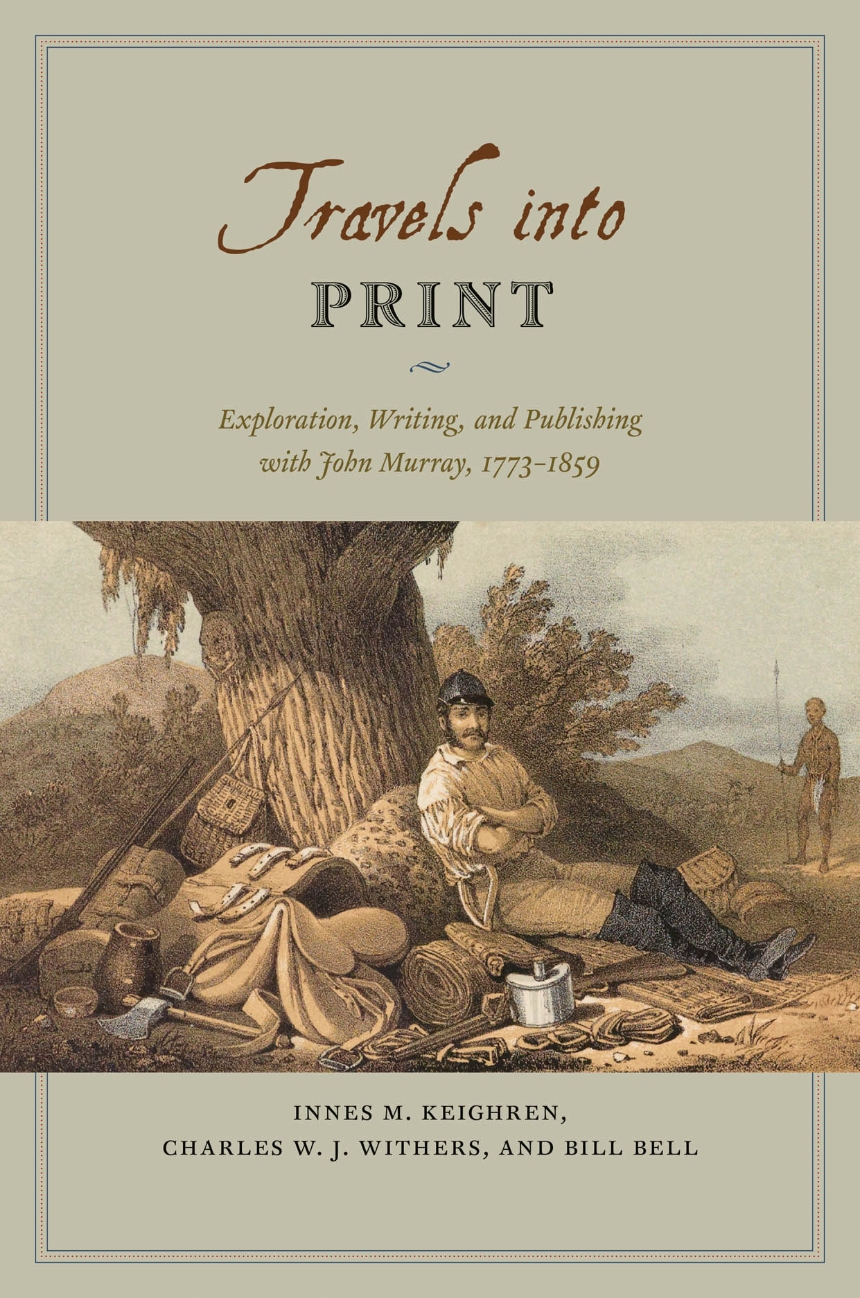Travels into Print
Exploration, Writing, and Publishing with John Murray, 1773-1859
9780226429533
9780226233574
Travels into Print
Exploration, Writing, and Publishing with John Murray, 1773-1859
In eighteenth- and nineteenth-century Britain, books of travel and exploration were much more than simply the printed experiences of intrepid authors. They were works of both artistry and industry—products of the complex, and often contested, relationships between authors and editors, publishers and printers. These books captivated the reading public and played a vital role in creating new geographical truths. In an age of global wonder and of expanding empires, there was no publisher more renowned for its travel books than the House of John Murray.
Drawing on detailed examination of the John Murray Archive of manuscripts, images, and the firm’s correspondence with its many authors—a list that included such illustrious explorers and scientists as Charles Darwin and Charles Lyell, and literary giants like Jane Austen, Lord Byron, and Sir Walter Scott—Travels into Print considers how journeys of exploration became published accounts and how travelers sought to demonstrate the faithfulness of their written testimony and to secure their personal credibility. This fascinating study in historical geography and book history takes modern readers on a journey into the nature of exploration, the production of authority in published travel narratives, and the creation of geographical authorship—a journey bound together by the unifying force of a world-leading publisher.
Drawing on detailed examination of the John Murray Archive of manuscripts, images, and the firm’s correspondence with its many authors—a list that included such illustrious explorers and scientists as Charles Darwin and Charles Lyell, and literary giants like Jane Austen, Lord Byron, and Sir Walter Scott—Travels into Print considers how journeys of exploration became published accounts and how travelers sought to demonstrate the faithfulness of their written testimony and to secure their personal credibility. This fascinating study in historical geography and book history takes modern readers on a journey into the nature of exploration, the production of authority in published travel narratives, and the creation of geographical authorship—a journey bound together by the unifying force of a world-leading publisher.
392 pages | 15 color plates, 25 halftones, 1 table | 6 x 9 | © 2015
Geography: Cultural and Historical Geography
History: Discoveries and Exploration, European History, General History
Library Science and Publishing: Publishing
Reviews
Table of Contents
Preface and Acknowledgments
Chapter One
Exploration and Narrative: Travel, Writing, Publishing, and the House of Murray
Chapter Two
Undertaking Travel and Exploration: Motives and Practicalities
Chapter Three
Writing the Truth: Claims to Credibility in Exploration and Narrative
Chapter Four
Explorers Become Authors: Authorship and Authorization
Chapter Five
Making the Printed Work: Paratextual Material, Visual Images, and Book Production
Chapter Six
Travel Writing in the Marketplace
Chapter Seven
Assembling Words and Worlds
Appendix
Books of Non-European Travel and Exploration Published by John Murray between 1773 and 1859: By Date of First Imprint, with Notes on Edition History before 1901
Notes
Bibliography
Index
Chapter One
Exploration and Narrative: Travel, Writing, Publishing, and the House of Murray
Chapter Two
Undertaking Travel and Exploration: Motives and Practicalities
Chapter Three
Writing the Truth: Claims to Credibility in Exploration and Narrative
Chapter Four
Explorers Become Authors: Authorship and Authorization
Chapter Five
Making the Printed Work: Paratextual Material, Visual Images, and Book Production
Chapter Six
Travel Writing in the Marketplace
Chapter Seven
Assembling Words and Worlds
Appendix
Books of Non-European Travel and Exploration Published by John Murray between 1773 and 1859: By Date of First Imprint, with Notes on Edition History before 1901
Notes
Bibliography
Index
